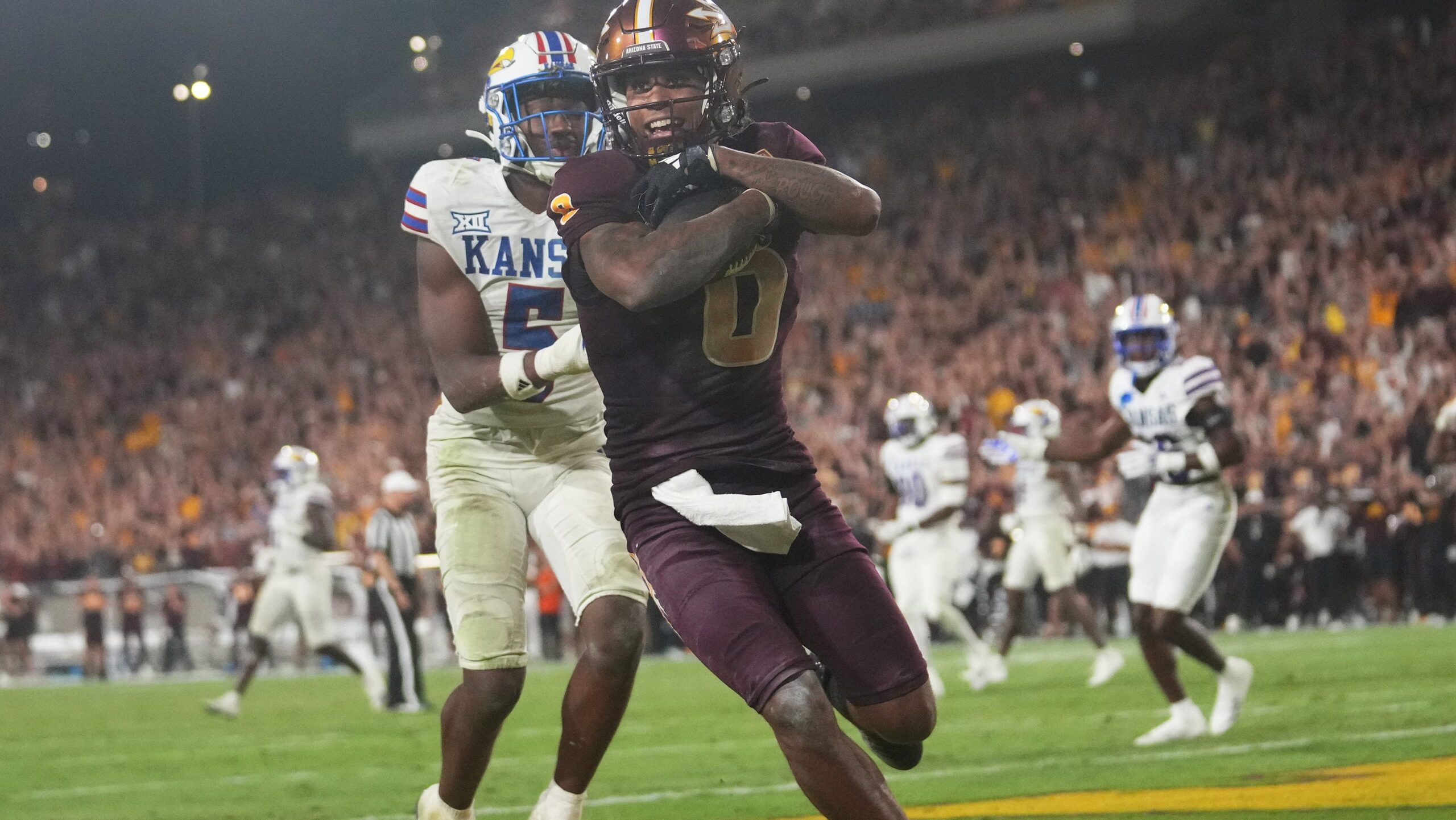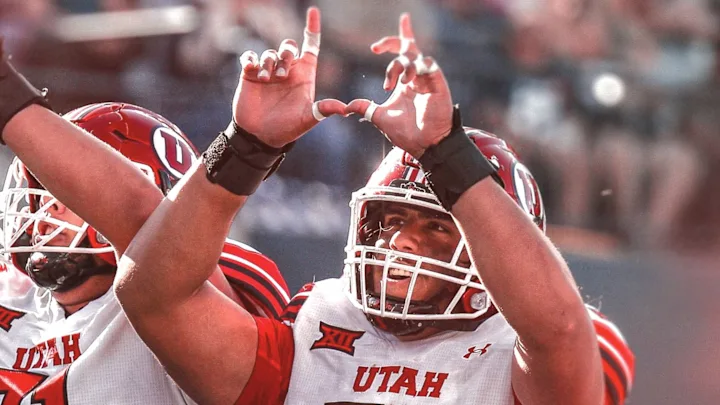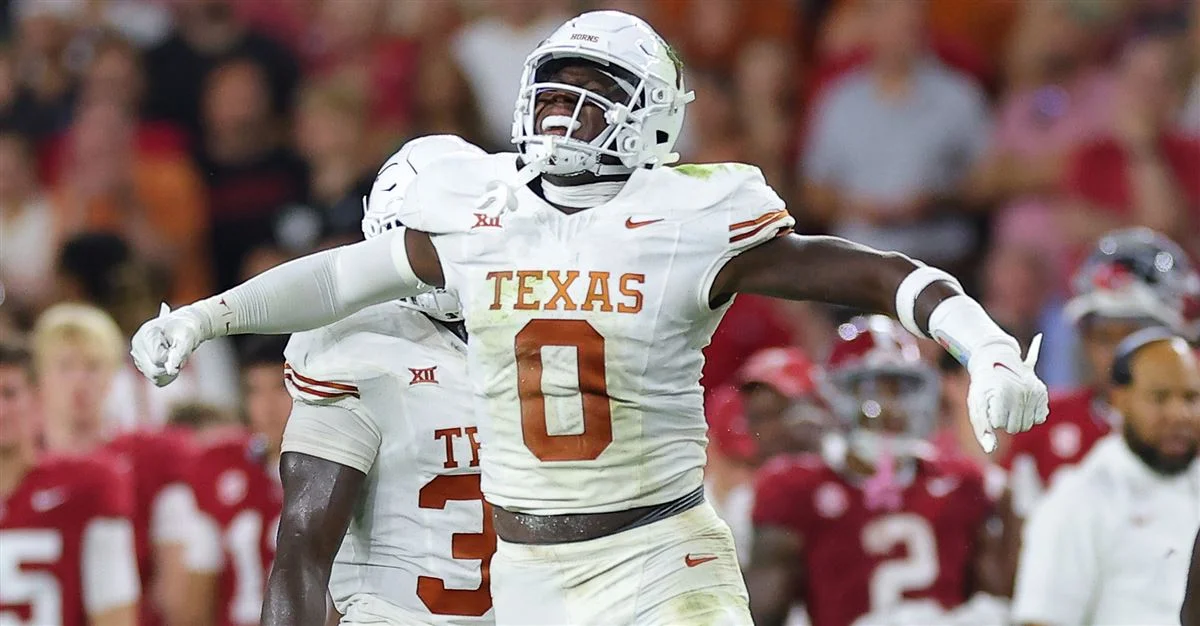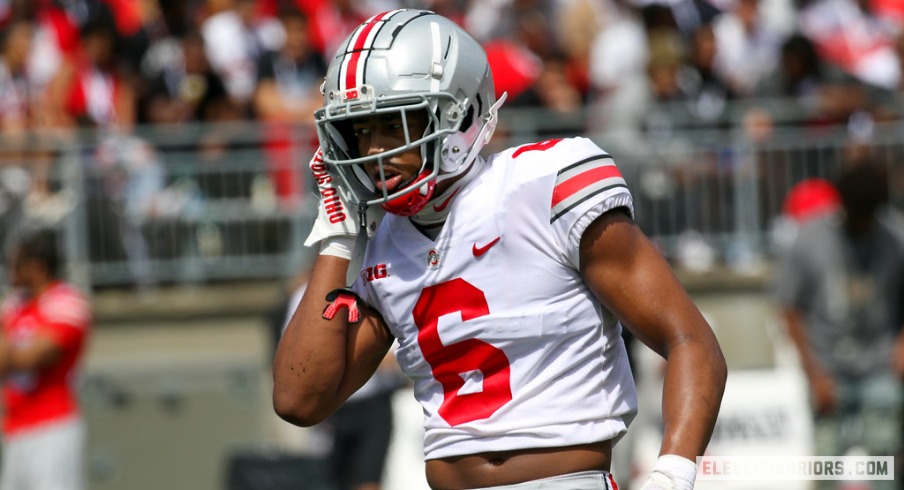By Charlie Campbell.
Send Charlie an e-mail here: [email protected]
Follow Charlie on Twitter @draftcampbell for updates.
This page was last updated April 5, 2018. Follow me @walterfootball for updates.
Position Review: Outside Linebackers
Center Class
Early-round talent: B+
Mid-round: B
Late-round: B+
Overall grade: B
2018 prospects vs 2017
Tremaine Edmunds
Roquan Smith
Haason Reddick
T.J. Watt
Reuben Foster
Harold Landry
Darius Leonard
Lorenzo Carter
Tyus Bowser
Ryan Anderson
Duke Riley
Dorance Armstrong
Tim Williams
Uchenna Nwosu
Ben Gedeon
Jerome Baker
The 2018 NFL Draft features a solid class of outside linebackers. There are early-round talents, depth into Day 2, and some quality players for the third day. The outside linebacker class features good run defenders, pass-coverage linebackers, pass-rushers and play-makers. This year’s group is better than last year’s class.
If you were to merge the classes together, Tremaine Edmunds and Roquan Smith would be the top prospects. They both are better prospects than Haason Reddick, the top outside linebacker from the 2017 NFL Draft. T.J. Watt and Reuben Foster are both better prospects than Harold Landry, Darius Leonard and Lorenzo Carter. Those three 2018 players are better second-rounders than Tyus Bowser and Ryan Anderson. Dorance Armstrong is a Round 3-caliber player, like Duke Riley. Tim Williams fell in the 2017 NFL Draft because of character concerns. Uchenna Nwosu and Jerome Baker are late third- or early fourth-round prospects similar to Ben Gedeon.
There are some other good third-day values at outside linebacker in Washington State’s Hercules Mata’afa, Ole Miss’ Marquis Haynes, Auburn’s Jeff Holland and Oklahoma’s Ogbonnia Okoronkwo.
Safest Pick: Tremaine Edmunds, Virginia Tech

The 19-year old Edmunds is a freak athlete with size, speed and athleticism. Over the past two seasons, the 6-foot-5, 236-pounder was all over the field for Virginia Tech. In 2016, Edmunds recorded 106 tackles with 18.5 tackles for a loss, 4.5 sacks, three passes broken up, one forced fumble and one interception. As a junior in 2017, he totaled 109 tackles with 5.5 sacks, 14 tackles for a loss, two passes batted and three forced fumbles.
Edmunds is an excellent run defender. He has good instincts and is quick to read his keys. With his quick reaction skills, he is always around the ball. Add that in with his explosive speed and athleticism, and Edmunds covers a ton of ground with a lot of tackles for a loss or near the line of scrimmage. Edmunds is very well suited to pass coverage in today’s NFL. As a professional, he could be an asset as a linebacker weapon to neutralize receiving-threat tight ends in man-to-man coverage. Edmunds functions very well in zone, too. He also could rush off the edge. Edmunds is a blank canvas who could play numerous positions in the NFL, including 3-4 outside linebacker, 3-4 inside linebacker, 4-3 inside linebacker or 4-3 outside linebacker. Edmunds has a ton of athletic upside and also gets high marks for his personal makeup. I think he is a safe bet to develop into a quality NFL starter.
My track record here is three good, one bad, and one in the middle. Kendricks has been a solid player, while Mack is a star for Oakland. Davis had a good rookie season and is on his way to a fine career. Those three I was correct about. Brown has been a huge disappointment and was a bust for Baltimore. The jury is still out on Jack; he’s been up and down for the Jaguars thus far.
2017: Jarrad Davis
2016: Myles Jack
2015: Eric Kendricks
2014: Khalil Mack
2013: Arthur Brown
Biggest Bust Potential: Lorenzo Carter, Georgia

This was a tough call. I gave consideration to Carter, Harold Landry and Jerome Baker here. I sought out the advice of a national scout who scouted all three players and asked them who had the most bust potential. This was his response, “All three, probably Baker, Carter [and] Landry. I’m not confident in any of them to live up to their draft status in my opinion.” In total, two team sources voted for Baker, and two voted for Carter. I went with Carter for a few reasons even though he has boom potential with his excellent skill set.
At Georgia, Carter never had one season of big potential despite seeing a lot of playing time in all four years. His best play came as a senior, but he still had fewer than 60 tackles (57) and five sacks (4.5). The 6-foot-5, 250-pounder is big, long, fast and athletic. It didn’t make sense to me why he didn’t dominate and was so inconsistent, only flashing occasionally. Team sources told me that Carter has dedication issues and gets by on a lot of natural ability. That put it over the top for me as dedication issues and lack of love of football explains why Carter was an underachiever in college.
The jury is still out on Reddick. He only started three games as a rookie and had less than 40 tackles while totaling 2.5 sacks. Considering Arizona’s recent track record with Robert Nkemdiche and D.J. Humphries, the organization has to be concerned that it reached again on a great athlete who isn’t a good player for the NFL. I was right about Kamalei Correa, who is on his way to being a bust. He has 19 tackles and zero sacks across 25 games. Dee Ford had a good 2016 season, but his other three seasons have been underwhelmed. Still, Ford probably wouldn’t count as a bust, and I won’t give myself any credit on that one. I was correct with Randy Gregory and Chase Thomas, but Thomas wasn’t an early-round pick, so he really doesn’t count as a bust.
2017: Haason Reddick
2016: Kamalei Correa
2015: Randy Gregory
2014: Dee Ford
2013: Chase Thomas
Outside Linebacker Rankings by Attributes
Pass Coverage:
NFL prototype: Lavonte David, Buccaneers
- Tremaine Edmunds
- Roquan Smith
- Darius Leonard
- Jerome Baker
- Dorance Armstrong
- Lorenzo Carter
- Harold Landry
- Uchenna Nwosu
Recap: The NFL is all about the passing offense, so linebackers must be be an asset at defending the aerial attack. Defensive coordinators want linebackers who function well in space and cover a lot of ground. They have to have good instincts and anticipate the routes that are coming their direction. Linebackers also need to function well in zone and have the ability to quickly get deep in their drops. Those who can play man coverage on running backs and tight ends are in serious demand.
In pass coverage, Edmunds is very well suited to today’s NFL. He could be an asset in the NFL as a linebacker weapon to neutralize receiving-threat-tight ends in man-to-man coverage. Edmunds has good height and length to match up on tight ends and the speed to get down the seam. For running backs out of the backfield, Edmunds is also a good weapon to defend them as he is fast to the flat and is an excellent open-field tackler. He was very good in zone coverage for Virginia Tech during the last two seasons. Edmunds is comfortable in space and uses his excellent closing speed to hunt down ball-carriers. In zone-coverage, Edmunds is skilled to pick up receivers coming into his area and keeping them from getting open. The freak athlete has drawn comparisons to Brian Urlacher.
Smith is an excellent fit for the NFL as a pass-coverage linebacker. He is a true asset for his defense. In coverage, he has the speed, athleticism and agility to be a man-coverage option against running backs or tight ends. Smith also gets good depth in zone and is sound to be in the right spot while covering up receivers who come into his territory.
Leonard gave evidence of his coverage skills at the Senior Bowl with an impressive week in coverage while going against a higher caliber of competition from what he was used to at South Carolina State. In coverage, he has the speed, athleticism and agility to be an option in man against running backs or tight ends. Leonard also gets good depth in zone and is sound to be in the right spot while covering up receivers who come into his territory. Leonard has the necessary quickness to run down the seam and defend the downfield middle portion of the field. In the early going of his NFL career, Leonard would be better off playing zone and improving his man-coverage skills before he gets isolated on tight ends or backs.
Baker was not as good in pass coverage as one might expect considering that he is a fast and fluid athlete. Still, he can function in space with the speed to cover. In the NFL, Baker could evolve into being a linebacker who specializes in pass coverage.
Carter has some coverage ability with a speed, length and athleticism. He will need more development for the NFL.
Armstrong didn’t drop in coverage at Kansas because he was the team’s only good pass-rusher. However, he looked good in linebacker drills at the combine. Landry was the same at Boston College while flashing that skill in workouts. I think both could develop into being a 3-4 outside linebacker who are solid at falling back into pass coverage in the NFL. Nwosu is similar to those two. I gave the edge to Armstrong because he has more length and is a more fluid athlete.
Pass Rush:
NFL prototype: Von Miller, Broncos
- Harold Landry
- Dorance Armstrong
- Tremaine Edmunds
- Uchenna Nwosu
- Darius Leonard
- Roquan Smith
- Lorenzo Carter
- Jerome Baker
Recap: This is a strong group of rushers off the edge. Landry is a fast edge rusher with speed and athleticism off the edge. He only had five sacks last year, also missing time with an injury, but he had 16.5 sacks the previous year. If Landry can get back to his 2016 form, he could make a quick impact in the NFL. Landry could stand to get stronger for fighting off NFL offensive tackles, but he is a fast edge rusher who is a skilled quarterback hunter.
In 2016 as a sophomore, Armstrong put together some serious production with 10 sacks, 20 tackles for a loss, 56 tackles and three forced fumbles. His production declined in 2017, because he saw a ton of extra blocking and plays deliberately went away from him while teams blew out the Jayhawks. Still, Armstrong is a fast and twitchy athlete who could be an excellent pass-rusher in the NFL.
Edmunds is a bit of a projection, but I think he has the potential to be an impactful edge rusher in the NFL. He had 10 sacks over the past two seasons, and that total could have been a lot larger if he had seen more pass-rushing opportunities. In a 3-4 defense, I think Edmunds could be a dangerous quarterback hunter with his speed, size, athleticism and instincts.
Nwosu is a relentless pass-rusher, totaling 9.5 sacks last season. He has some speed and athleticism off the edge. However, he can struggle with length and strength from offensive tackles. The tackles in the NFL are bigger, longer and stronger than what Nwosu saw in college, so althought I think he could contribute in the pass rush, I don’t believe he has the pass-rush potential of Landry or Armstrong.
Leonard is a dangerous blitzer who closes on the quarterback quickly. With 21.5 sacks in his college career, Leonard has a real nose for the quarterback. He probably won’t be used to rush off the edge in the NFL, but he has the skills to put pressure on the quarterback and will be able to contribute some sacks if he is given the opportunity to blitz often.
Smith was a dangerous blitzer last year with 6.5 sacks. He uses his great speed to fire into the quarterback and chases him down with a burst to close. Kizer totaled 11.5 sacks over the past two seasons and is a natural blitzer.
Carter is lower on this list because he did receive a lot of pass-rushing opportunities at Georgia, yet underachieved. He had the skills to dominate, but allowed plenty of lesser-talented players to get the better of him. Carter had 4.5 sacks last year and five the year before. One team source also pointed out that the SEC has not had a lot of good offensive tackles in recent years. That further supports that Carter should have been a double-digit sacker given his skill set. He is a boom-or-bust player with great potential but a complete lack of consistency.
Baker had 3.5 sacks in each of the past two seasons and blitzed well in college. However for the NFL, he is a coverage linebacker and not an edge rusher.
Run Defense:
NFL prototype: Lavonte David, Buccaneers
- Tremaine Edmunds
- Roquan Smith
- Darius Leonard
- Uchenna Nwosu
- Dorance Armstrong
- Jerome Baker
- Harold Landry
- Lorenzo Carter
Recap: Edmunds is an excellent run defender. He has good instincts and is quick to read his keys. With his quick reaction skills, he is always around the ball. Add that in with his explosive speed and athleticism, Edmunds covers a ton of ground with a lot of tackles for a loss or near the line of scrimmage. He is a skilled defender at producing a lot of good down-and-distance situations for his defense. Edmunds gave Virginia Tech a lot of second-and-8s, third-and-7s, and consistently put his defense in good position. Edmunds has the size and strength to take on blockers with the speed to cover the perimeter. He also is a hard tackler who wraps up ball-carriers and puts hard them to the turf. With his versatile skill set, Edmunds could be a middle or outside linebacker in the NFL.
Smith is a tremendous linebacker with excellent instincts. He has superb speed, and in combination his instincts, he is a heat-seeking missile who tracks down ball-carriers all over the field. Smith is very fast to the flat and shuts down perimeter rushing attacks. He also is quick to read his keys and fire to the right spot to make tackles. With his speed, instincts, and diagnosis skills, Smith is a dangerous run defender who consistently puts his defense in good down-and-distance situations.
Leonard is an instinctive linebacker who is quick to read his keys and get in position to make plays. He is a good wrapup tackler who can pack a punch when he gets there, and he is very conscious to create big plays by consistently trying to strip the ball from ball-carriers. His eight career forced fumbles were no accident. Leonard is a quick linebacker who is able to defend sideline to sideline. He also is quick to read his keys and fire to the right spot to make tackles. With his speed, instincts, play recognition, and diagnosis skills, Leonard is a sound run defender.
Nwosu and Armstrong aren’t the biggest of edge defenders, but both of them are scrappers who make a lot of tackles in pursuit. Nwosu had 75 last year, while Armstrong had 63 last year despite seeing a ton of double teams. Both of them find a way to be effective contributors in the ground game.
Baker is a quick pursuit linebacker, but he will have issues defending downhill runs straight at him in the NFL.
Landry’s run defense was awful in 2017. He struggled to get off blocks and didn’t look all that interested in fighting to hold his ground or get in on tackles. Landry’s run defense was a liability when he was on the field, and he has to get much better in the NFL to become a three-down starter. As a pro, he will be better off as an outside linebacker rather than playing defensive end.
Carter has the size, strength, length and speed to be a good run defender, but he never became that at Georgia. Over his four seasons of playing time, his tackle totals were: 41, 19, 44 and 57. Carter should have produced a lot more, and his effort or lack thereof was a big contributing factor.
Tackling:
NFL prototype: K.J. Wright, Seahawks
- Tremaine Edmunds
- Roquan Smith
- Darius Leonard
- Dorance Armstrong
- Uchenna Nwosu
- Harold Landry
- Lorenzo Carter
- Jerome Baker
Recap: Edmunds is the best tackler in the class, and Smith is a close second. Edmunds is reliable in taking ball-carriers to the ground when he gets a hold of them. He chased down fast runners and held his ground on power backs with good technique. Edmunds also lays out some devastating hits and is a violent tackler. He has a real physical presence.
Smith is a rock-solid tackler. You rarely see him miss tackles, and he does a nice job of tackling ball-carriers who other linebackers are incapable of getting to.
Leonard was very reliable to finish the tackle when he got there. Armstrong, Nwosu, Landry and Carter are quality tacklers. Baker will be in for an adjustment for taking on big backs and could stand to get stronger.
Shedding Blocks:
NFL prototype: K.J. Wright, Seahawks
- Tremaine Edmunds
- Dorance Armstrong
- Uchenna Nwosu
- Harold Landry
- Lorenzo Carter
- Roquan Smith
- Darius Leonard
- Jerome Baker
Recap: Edmunds is very adept at taking on and shedding blocks. He uses his strength and length to disengage with the explosive speed to dart away. Edmunds could end up becoming the prototype pick for this category during his NFL career.
Armstrong, Nwosu and Landry were good at getting off blocks when it came to rushing the passer. However, they all could stand to get better at shedding blocks in the ground game for the NFL. Carter has the ability to get off blocks, but doesn’t do it consistently enough.
Smith can get covered up by offensive linemen and can struggle to get off their blocks. He has added weight since the end of the college football season, so that could help him to improve in this regard.
Splash Plays:
NFL prototype: Von Miller, Broncos
- Darius Leonard
- Harold Landry
- Dorance Armstrong
- Tremaine Edmunds
- Lorenzo Carter
- Roquan Smith
- Uchenna Nwosu
- Jerome Baker
Recap: NFL coaches love players who can take the ball away. That is a great equalizer against high-powered offenses and can directly lead to victories.
Leonard had six interceptions over the past three seasons to go along with eight forced fumbles in his college career. He was playing against weaker competition than the rest of these players, but he has a real knack for creating turnovers.
You might be surprised that I have Landry ranked second to the top here considering he had zero forced fumbles last year. However, he leads all of these prospects with 10 career forced fumbles. When Landry was doing well in 2016, he was dangerous to produce the strip-sack, recording seven forced fumbles that year, which is a huge total for an edge rusher. Landry has good instincts to go for the ball and could produce a nice amount of fumbles for his pro defense.
Armstrong wasn’t far off as he had four forced fumbles as a junior and three as a sophomore. Edmunds produced a number of splash plays with forced fumbles, interceptions and sacks. He has the upside to do that even more in the NFL.
Carter created three forced fumbles last year and showed some big play potential. Smith made a ton of big tackles, but he notched zero interceptions in college and had only one forced fumble in his final season. Nwosu and Baker did not create a lot of turnovers, but they did make impactful plays.
NFL Picks - Dec. 13
NFL Power Rankings - Dec. 10
2026 NFL Mock Draft - Dec. 10
Fantasy Football Rankings - Sept. 1




